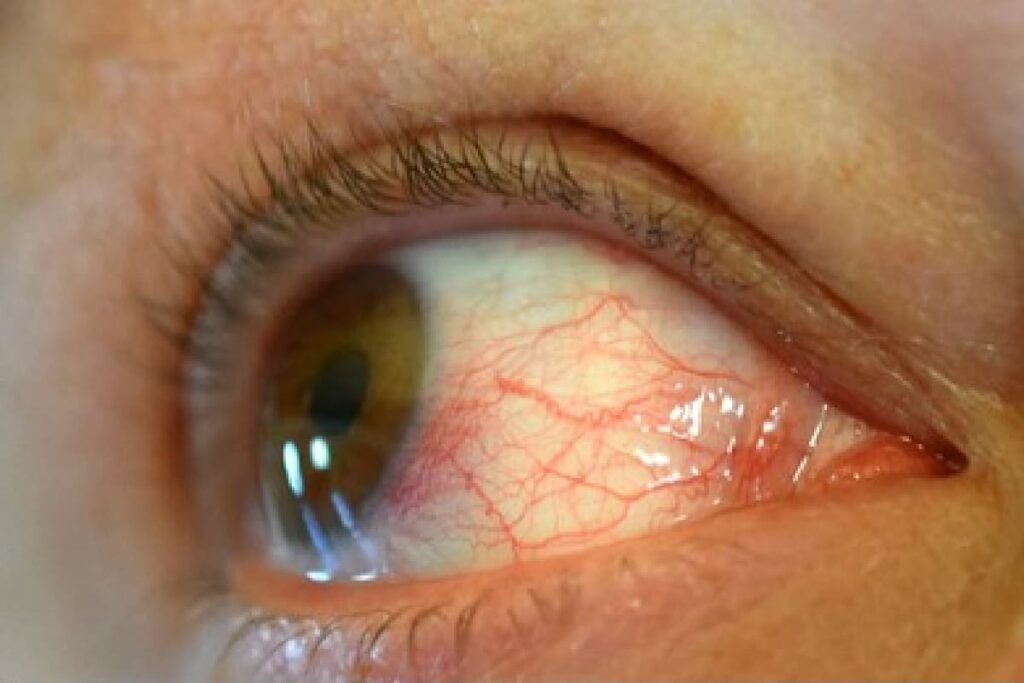What is Chlamydial Conjunctivitis?
Chlamydial conjunctivitis, also known as inclusion conjunctivitis, is an eye infection caused by the bacterium Chlamydia trachomatis. This condition can affect individuals of all ages but is particularly common in sexually active adults and newborns exposed during childbirth. It manifests as inflammation of the conjunctiva, the thin membrane covering the white part of the eye and the inside of the eyelids.

Causes and Risk Factors
The primary cause of chlamydial conjunctivitis is infection with Chlamydia trachomatis. This bacterium is typically transmitted through:
- Direct contact with infected genital secretions
- Poor hand hygiene leading to eye contamination
- Maternal transmission during vaginal delivery
Certain factors increase the likelihood of developing the condition, including:
- Being sexually active without using barrier protection methods.
- Having a history of sexually transmitted infections (STIs).
- Poor sanitation or hygiene practices.
- Neonatal exposure during delivery from an infected mother.
Symptoms of Chlamydial Conjunctivitis
Common symptoms of chlamydial conjunctivitis include:
- Redness and swelling of the conjunctiva
- Mucopurulent discharge, which may cause the eyelids to stick together
- Gritty sensation in the eye
- Tearing or watery eyes
- Sensitivity to light (photophobia)
- Eyelid swelling
In chronic cases, untreated infections may result in scarring of the conjunctiva or corneal complications, leading to visual impairment.
Diagnosis
Accurate diagnosis of chlamydial conjunctivitis is essential for effective treatment. The following steps are commonly employed:
- Medical History: Evaluating the patient’s history of STIs, sexual activity, or maternal infections.
- Clinical Examination: Inspection of the eye for redness, discharge, and swelling.
- Laboratory Testing:
- Conjunctival swabs for polymerase chain reaction (PCR) testing to detect Chlamydia trachomatis DNA.
- Culture tests or direct fluorescent antibody (DFA) staining.
- Differential Diagnosis: Ruling out other causes of conjunctivitis, such as viral or bacterial infections, allergic reactions, or trauma.
Treatment Options
The treatment of chlamydial conjunctivitis focuses on eradicating the underlying infection and preventing complications. Common approaches include:
Antibiotic Therapy
- Oral Antibiotics: Doxycycline or azithromycin are the first-line treatments for adults.
- Topical Antibiotics: Erythromycin ointment or tetracycline drops may be used alongside oral medications to address localized symptoms.
- For Neonates: Erythromycin syrup is commonly prescribed.
Preventive Measures
- Regular STI screening for sexually active individuals
- Use of condoms or other barrier methods
- Maternal screening and treatment during pregnancy to reduce neonatal exposure
Complications of Untreated Chlamydial Conjunctivitis
If left untreated, chlamydial conjunctivitis can lead to:
- Chronic inflammation
- Scarring of the conjunctiva
- Corneal ulcers or perforation
- Vision loss or blindness
Timely intervention significantly reduces the risk of these complications.
Epidemiology and Public Health Impact
Its a global health concern, particularly in regions with limited access to healthcare. Neonatal infections are a leading cause of preventable blindness in developing countries. Public health initiatives, including awareness campaigns and improved access to STI treatment, play a crucial role in reducing the prevalence of this condition.

